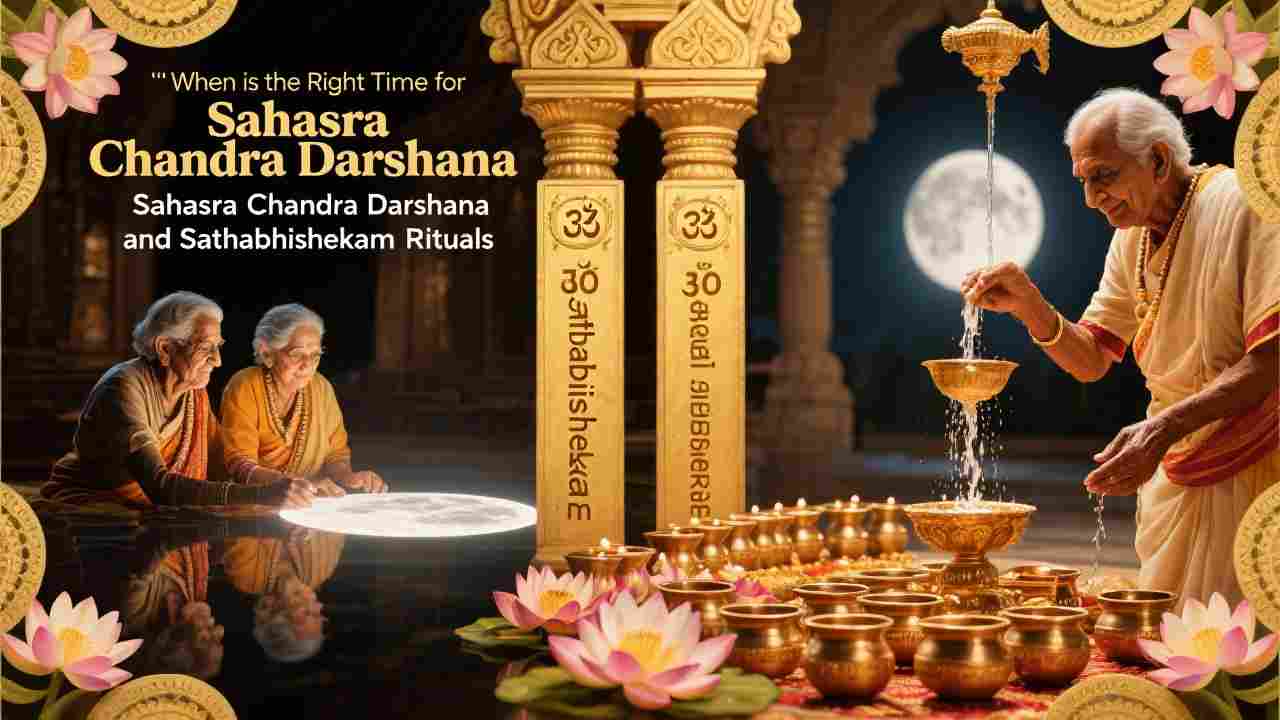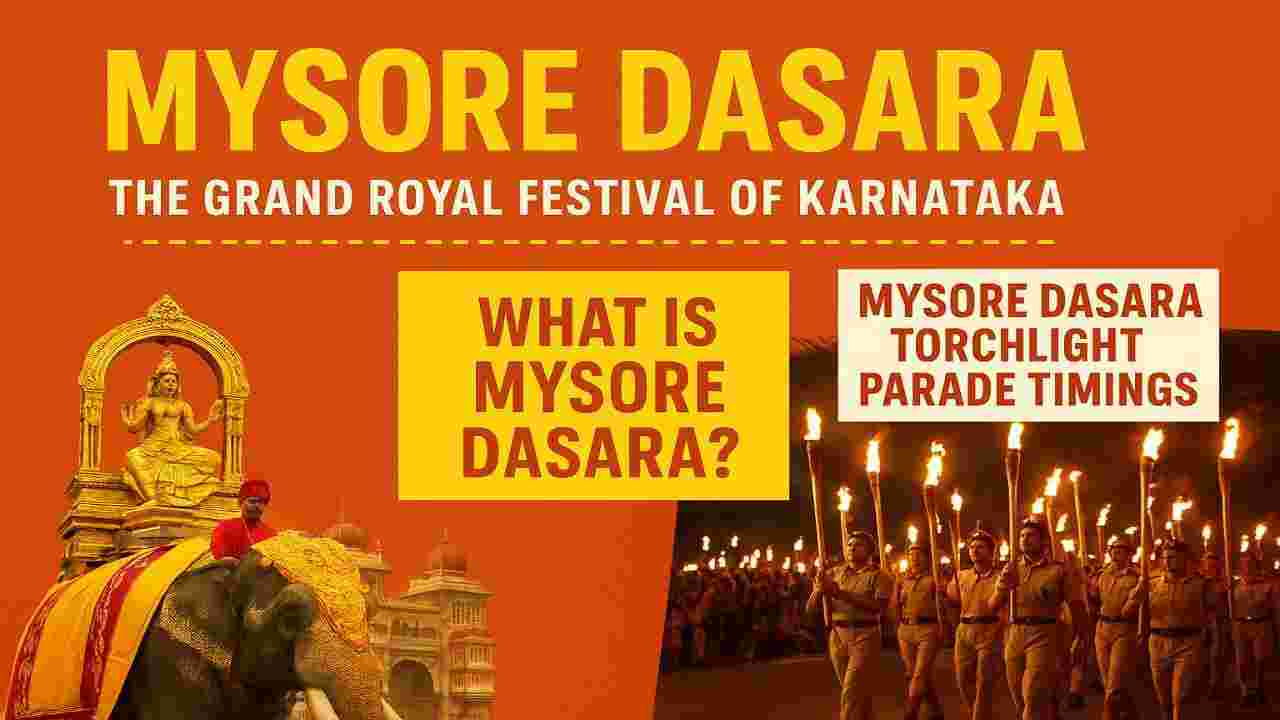
Have you ever imagined what it means to see a thousand full moons in one lifetime? In Hindu culture, this rare milestone is celebrated as Sahasra Chandra Darshana, an auspicious ritual that honors longevity, divine blessings, and the sacred bond between life and cosmic cycles.
Known also as Sahasra Purna Chandrodayam or celebrated along with Sathabhishekam, this ceremony is more than just a recognition of age. It is a profound spiritual reminder that human life, like the moon, passes through many phases yet shines with eternal grace.
In this blog, we’ll explore the meaning of Sahasra Chandra Darshana, its rituals, spiritual symbolism, connection to Chandra Darshana, and the life lessons it offers to both elders and younger generations.
What is Sahasra Chandra Darshana?
The phrase Sahasra Chandra Darshana literally translates to “the sight of a thousand moons.” This event typically occurs when a person reaches 80 years and 8 months of age. The time it takes to witness approximately 1,000 full moons since birth.
- Sahasra = Thousand
- Chandra = Moon
- Darshana = Vision or Sight
This milestone is considered extraordinary, as not everyone is blessed with such longevity. The ritual celebrates the person’s journey of life, honoring their wisdom, experiences, and contribution to family and society.
The Cosmic Importance of the Moon in Hinduism
The moon has always held a special place in Hindu philosophy, mythology, and rituals. To understand Sahasra Chandra Darshana, one must first see why the moon is sacred:
- Symbol of Mind and Emotions – In Vedic astrology, Chandra (the moon) governs the mind, heart, and inner peace. A balanced moon signifies emotional stability and clarity.
- Cycle of Time – The Hindu calendar (panchangam) follows the lunar cycle. Festivals, fasts, and rituals are tied to the moon phases.
- Spiritual Energy – Full moon days (Purnima) are believed to carry high spiritual vibrations, making prayers, homas, and meditations especially powerful.
Thus, when a person completes a thousand full moons, it is considered the highest blessing of nature and a sign of divine grace.
When Does Sahasra Chandra Darshana Happen?
A full moon occurs roughly every 29.5 days. Over time, 1,000 moons equal about 29,530 days, or 80 years and 8 months.
When a person reaches this age, families arrange the Sahasra Chandra Darshana Shanti ritual, which involves prayers, homas, and blessings to mark the event.
Rituals of Sahasra Chandra Darshana Shanti
The celebration is a vibrant and spiritually charged event, especially observed in South India. Here are the main components:

1. Sankalpam – Setting Divine Intention
Priests begin the ceremony with sankalpam, invoking blessings from deities, ancestors, and universal forces for the longevity and peace of the individual.
2. Ganapati Puja
Lord Ganesha is worshipped to remove obstacles and grant auspiciousness.
3. Homas (Sacred Fire Rituals)
Different homas are performed, such as:
- Navagraha Homam for planetary harmony.
- Ayushya Homam for health and longevity.
- Rudra Homam for spiritual upliftment and protection.
4. Kalasha Abhishekam
Water-filled kalashas (sacred pots) representing divine power are poured over the elder couple in a ritual bath, symbolizing purification and renewal.
5. Blessings and Felicitation
The couple is dressed in new clothes like dhoti and silk saree, and is honored with garlands. Family members seek their blessings by touching their feet.
6. Annadanam – Feeding the Gathering
The ritual concludes with a grand feast, where food is offered to relatives, guests, and sometimes even the community, signifying gratitude and abundance.
The Role of Astrology in the Ritual
Astrology plays a vital role in deciding the exact muhurta (auspicious time) for the ceremony. Priests calculate the 1,000th full moon and align it with a favorable planetary combination. This synchronization ensures maximum spiritual benefit, as the ritual then harmonizes both human life and cosmic rhythms.
Emotional Significance for Families
Beyond religious observance, Sahasra Chandra Darshana is deeply emotional. For children and grandchildren, it is a moment to honor and express gratitude to their elders. For the elderly, it is a sense of fulfillment—witnessing the continuation of their lineage and the preservation of their traditions.
It is also a celebration of resilience, reflecting on the challenges faced across decades, and the joy of being surrounded by multiple generations.
Sahasra Purna Chandrodayam – Another Name
In some traditions, this milestone is referred to as Sahasra Purna Chandrodayam, meaning “the rising of a thousand full moons.” This phrase emphasizes the completeness of life—just as the moon reaches fullness after cycles of growth, so too does human life reach a stage of wisdom and completeness after 80+ years.
Connection to Chandra Darshana
The term Chandra Darshana generally refers to the ritual sighting of the moon during festivals and vratas. For example:
- On Karva Chauth, women break their fast after sighting the moon.
- On Sankashti Chaturthi, devotees end their fast after moonrise.
Sahasra Chandra Darshana is like the ultimate form of Chandra Darshana, not a single ritual sighting, but the privilege of witnessing a thousand moons in one’s lifetime.
Link with Sathabhishekam
Another ritual closely associated with this milestone is Sathabhishekam. It is performed when a person crosses 80 years, symbolizing completion of 1000 moons.
- Sathabhishekam means “sacred bathing at the 100th year.”
- It celebrates longevity, marital harmony, and spiritual fulfillment.
- Many families combine Sahasra Chandra Darshana Shanti and Sathabhishekam into one grand event.
Symbolism of the Thousand Moons
Each moon seen in life represents a phase—childhood, youth, maturity, old age. Witnessing a thousand moons signifies:
- Resilience – A long life lived with perseverance.
- Completeness – A cycle of growth and fulfillment.
- Immortality of the Soul – Like the moon that wanes and waxes but never disappears, the soul too continues beyond physical existence.
Lessons for Younger Generations
The ritual is not only for the elderly but also carries strong messages for the youth:
- Respect for elders – Recognizing their journey and sacrifices.
- Value of dharma – Living a life rooted in righteousness.
- Importance of family unity – Preserving bonds across generations.
- Spiritual reflection – Understanding that true wealth lies in wisdom and inner peace.
Modern Relevance of Sahasra Chandra Darshana
In the modern world, where longevity is increasing due to medical advancements, this ritual gains even more importance as a cultural anchor. It reminds us that:
- A long life should be celebrated not just biologically but spiritually.
- Elders are carriers of culture and tradition.
- Celebrations like these bind families together across time and geography.
Even among diaspora communities in the US, UK, Singapore, and elsewhere, families conduct Sahasra Chandra Darshana Shanti, sometimes adapting it to temple or community halls, ensuring traditions remain alive globally.
A Legacy of Dharma and Blessings
Ultimately, Sahasra Chandra Darshana is about leaving behind a spiritual and cultural legacy. Elders at this stage are respected as living embodiments of wisdom, and their blessings are considered extremely powerful.
The ritual allows them to share their life lessons, prayers, and hopes for the family’s future. In this way, the thousand moons become a symbol of continuity, connecting the wisdom of the past with the aspirations of the future.
So, Sahasra Chandra Darshana is not just an age-based celebration, it is a spiritual milestone that connects human life with cosmic rhythms. Whether called Sahasra Purna Chandrodayam or celebrated alongside Sathabhishekam, the ritual honors the gift of longevity, the strength of family unity, and the eternal wisdom of the moon.
Witnessing a thousand moons is one of life’s rarest blessings, a moment where time, tradition, and divinity meet.
Want to explore more such sacred Hindu rituals? Dive into our other mythology blogs.
Mysore Dasara: Karnataka’s Royal Festival of Tradition, Power, and Devotion

